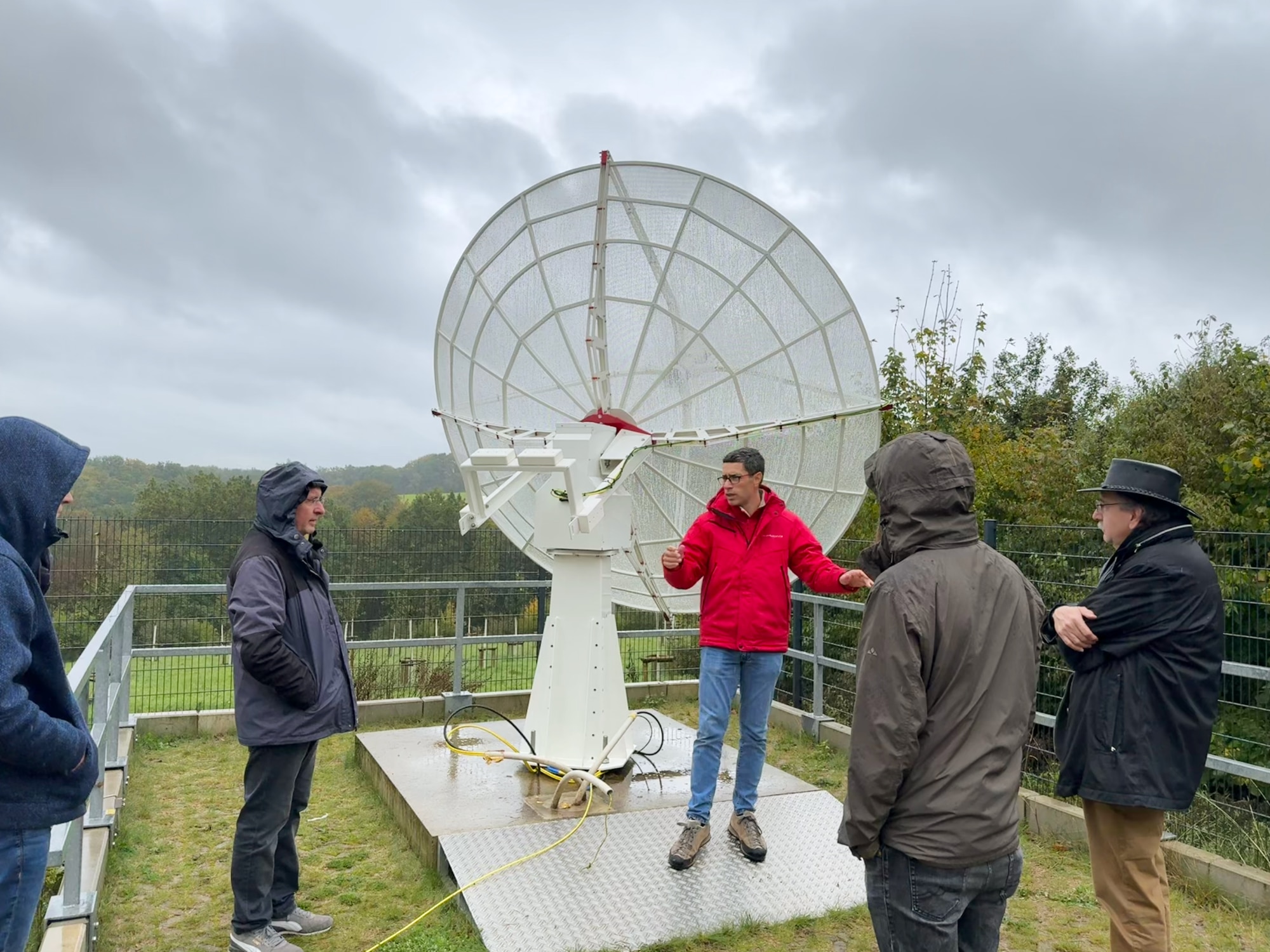SPIDER 300A radio telescope installed in Ruhr-University Bochum (Germany)
PrimaLuceLab Team completed the installation of a new SPIDER 300A radio telescope for radio astronomy in Ruhr-University Bochum (Germany)! The 3 meter diameter antenna with the tracking system and pier has been installed on a concrete base foundation while receiver with backend and control computer have been installed in the nearby Control Room for an easy remote control. After the installation has been completed, Installation Team aligned the radio telescope antenna to radio sources in the sky and went through a Training Session with university personnel by demonstrating SPIDER’s features.
The 3 meter diameter parabolic antenna has been assembled in front of the concrete base: PrimaLuceLab Installation Team first connected the antenna rear supports, then assembled the main reflector (that is shipped divided in 4 parts for an easier delivery to any location) and finally installed the front support that keeps the H-FEED in focus. On top of the feed, optical converters of Radio-over-Fiber kit with LNA units have been connected.
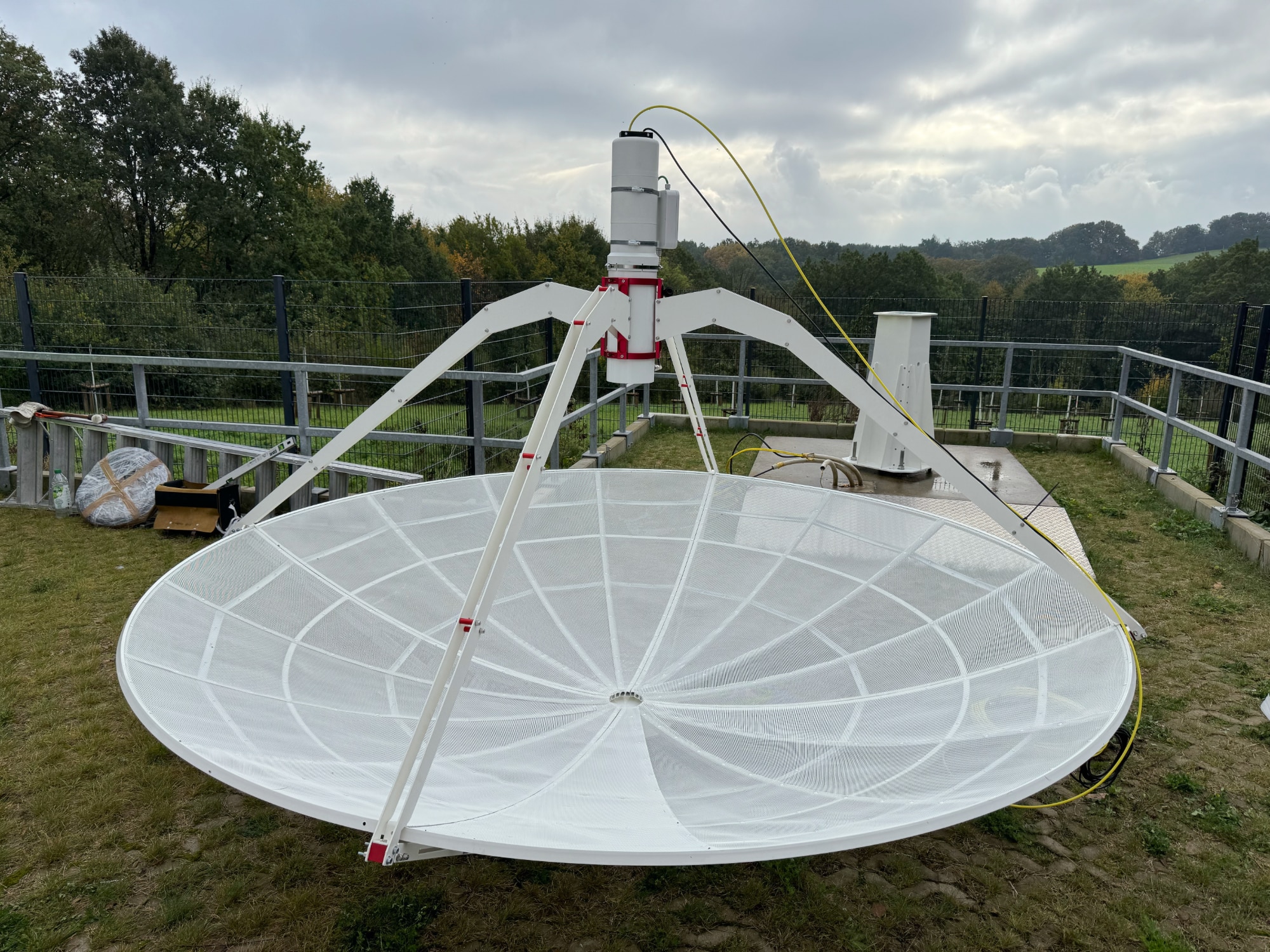
Next, SPIDER tracking system head (WP-100 with 100kg payload capacity and very high tracking resolution) has been installed, by using a lifting machine, on top of C106-HEAVY pier for concrete base. SPIDER tracking system is weatherproof so the radio telescope doesn’t need to be protected with a dome in order to be used for radio astronomy applications. And the antenna has been designed in order to offer safety features to provide high survival wind speed.
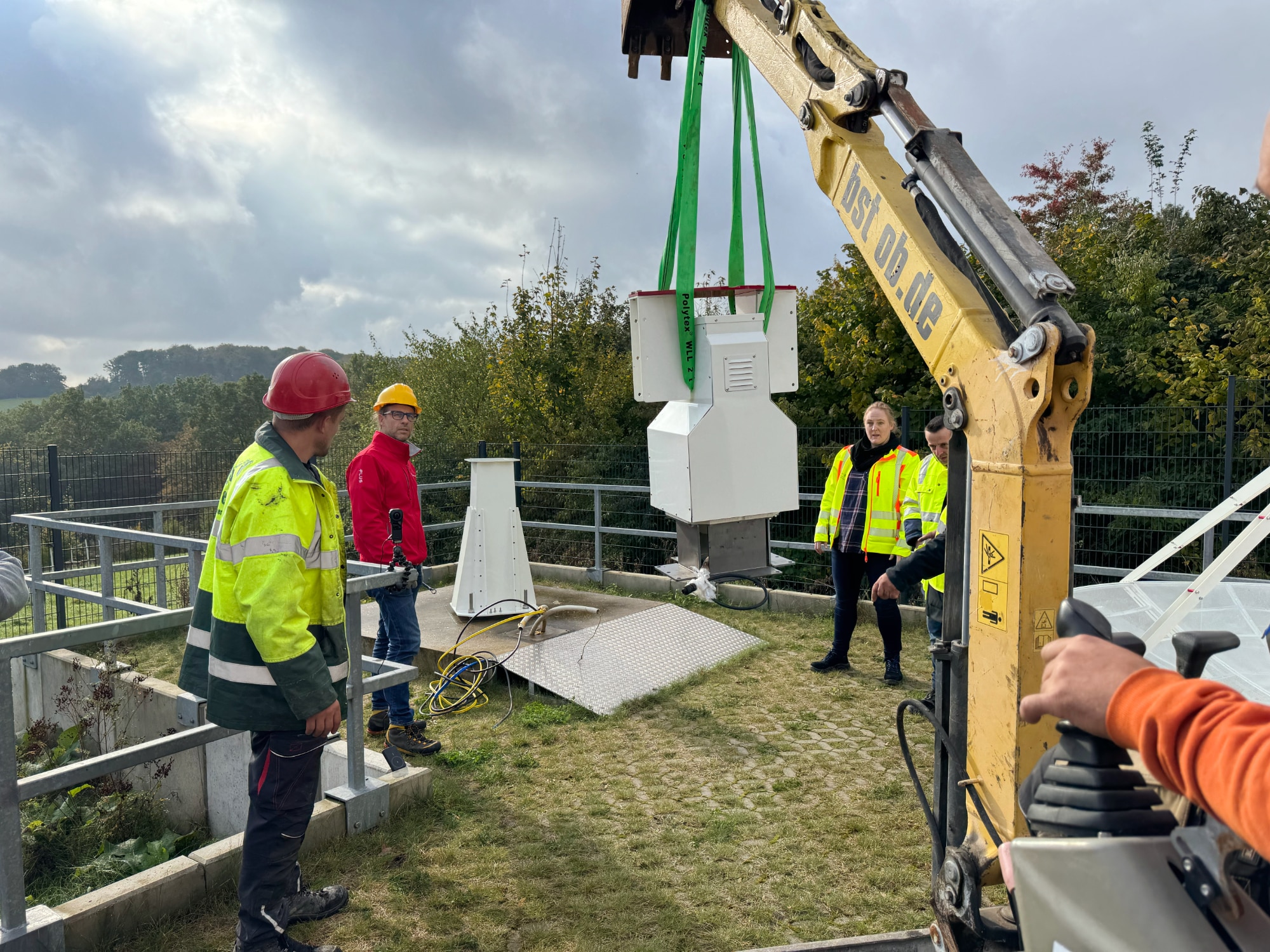
In order to provide the best system performance, the Radio-over-fiber kit for SPIDER radio telescopes has ben added: this is used to avoid signal loss of standard coaxial cables (that usually connect LNA units to receiver) this way allowing the radio telescope to record data from weaker radio sources. RoF-SPIDER is important also to reduce radio frequency interferences that have to be considered (since the radio telescope has been installed close to university buildings) and that are this way minimised.
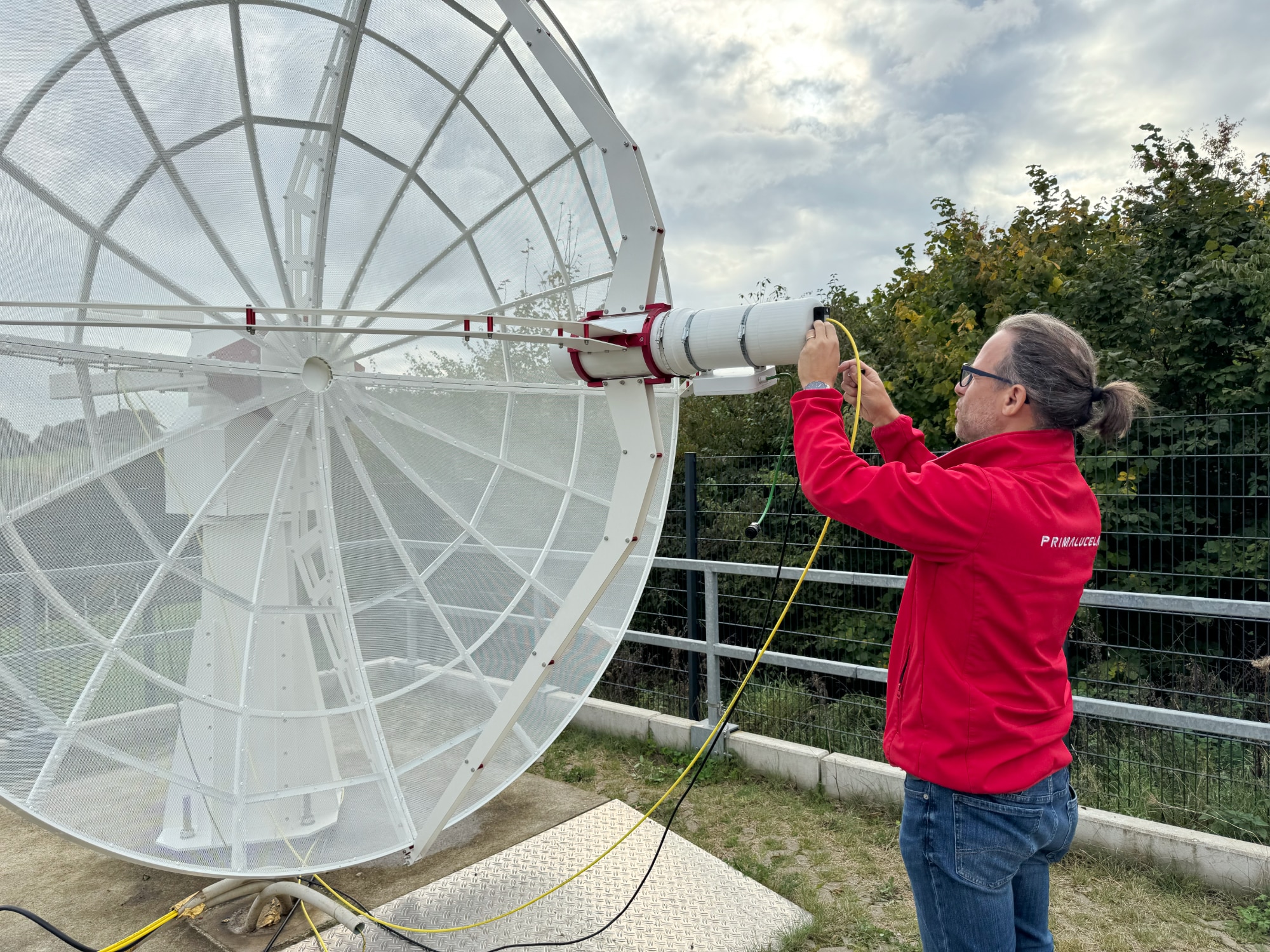
In the control room, PrimaLuceLab Team installed all the devices in a 19″ rack provided by the customer. Added to the H142-One 1420 MHz receiver with backend and to the RCPU-100 antenna control unit (that are part of the SPIDER 300A radio telescope), the Radio-over-Fiver converter has been connected (in the picture below you can see the green LED lights that confirm operation of optical converter), together with the Ultrasonic Wind sensor controller (that, connected to the outside wind sensor, monitors wind speed and automatically parks radio telescope in stow position is wind exceed safety limit). All the devices have been connected to the control computer where RadioUniversePRO software has been installed.
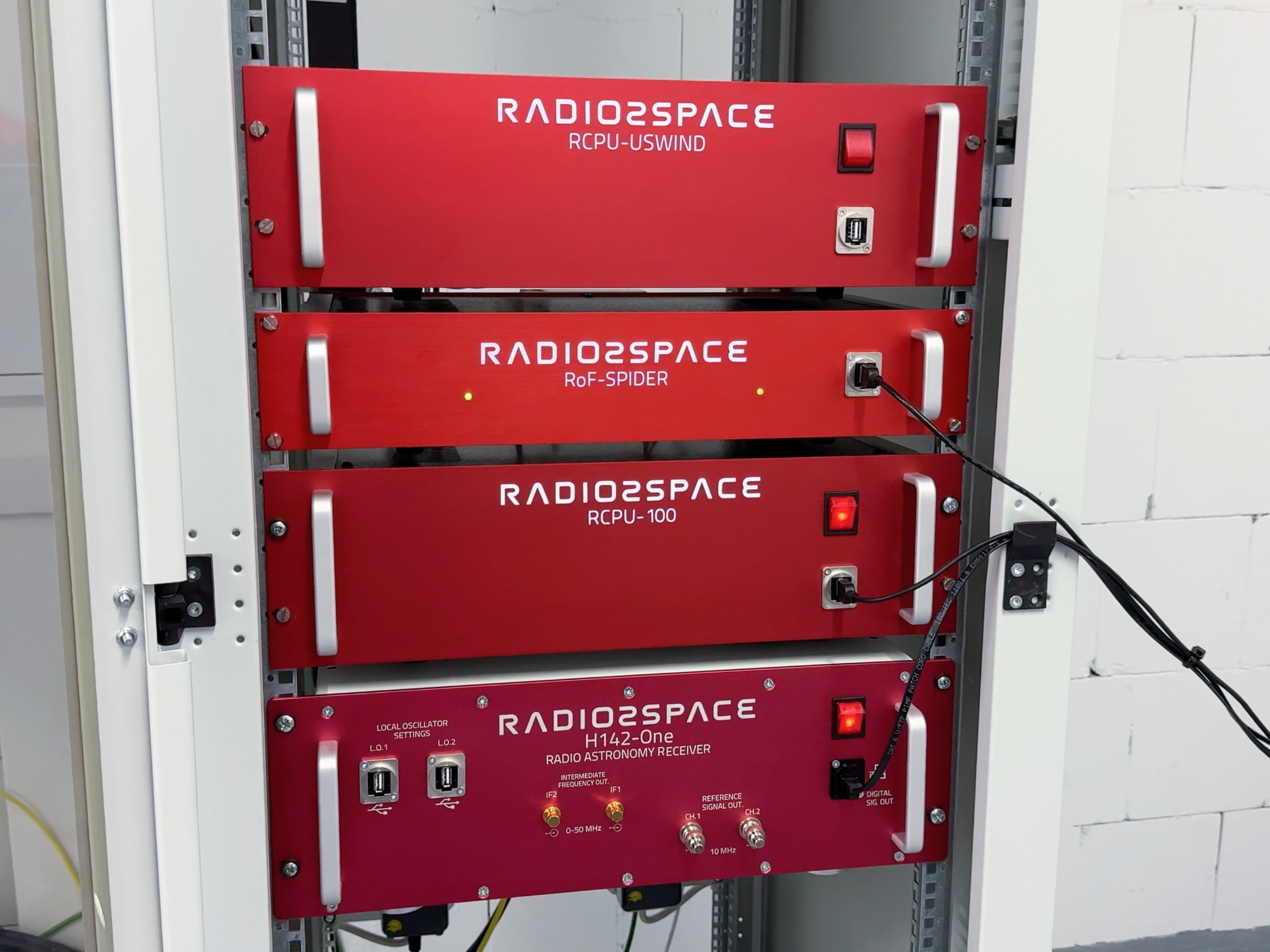
Then, even if weather conditions were not good (rain is not a limitation for SPIDER radio telescope at 1420 MHz frequency), the radio telescope antenna has been aligned to the sky radio sources and a first map has been completed in order to check system alignment. Next PrimaLuceLab Installation Team offered a training session by explaining all the features of SPIDER radio telescope and of RadioUniversePRO software that has been used in order to collect radiometric values, spectra and radio maps by pointing different objects.
